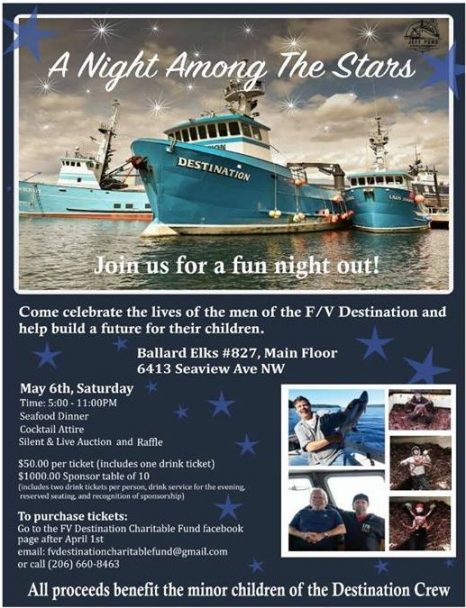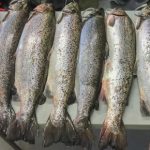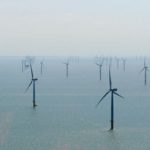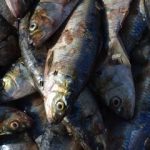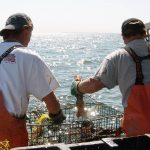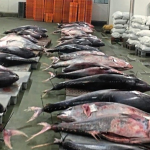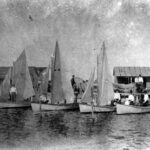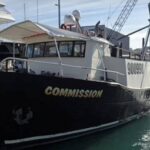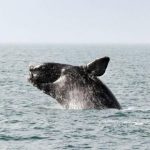Monthly Archives: April 2017
Did catch shares enable the Codfather’s fishing fraud?
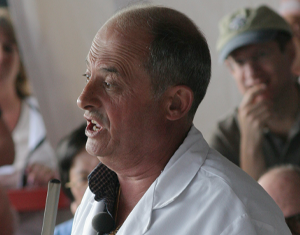 Carlos Rafael’s guilty plea late last month of falsifying fish quotas, conspiracy and tax evasion has prompted renewed criticism of one of the most contentious parts of the New England groundfish fishery’s management system: catch shares.Rafael, who dubbed himself “The Codfather,” owned one of the largest commercial fishing fleets in the United States, and for some community fishermen in New England, his case represents consolidation run amok. Consolidating fishing permits, they say, also centralizes power, making fraud more likely. But for environmentalists who support catch shares as a way to reduce overfishing, consolidation isn’t inevitable. They say Rafael’s case highlights the need for better monitoring and fraud protections to prevent the sort of cheating that can plague any fishery management system. click here to read the rest 19:09
Carlos Rafael’s guilty plea late last month of falsifying fish quotas, conspiracy and tax evasion has prompted renewed criticism of one of the most contentious parts of the New England groundfish fishery’s management system: catch shares.Rafael, who dubbed himself “The Codfather,” owned one of the largest commercial fishing fleets in the United States, and for some community fishermen in New England, his case represents consolidation run amok. Consolidating fishing permits, they say, also centralizes power, making fraud more likely. But for environmentalists who support catch shares as a way to reduce overfishing, consolidation isn’t inevitable. They say Rafael’s case highlights the need for better monitoring and fraud protections to prevent the sort of cheating that can plague any fishery management system. click here to read the rest 19:09
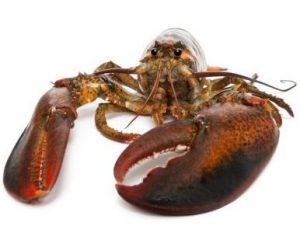
How Lobsters Do It – Mating among lobsters is a tender, human-like affair
Between their hard shells and strong pincers, American lobsters are built to fight and keep other creatures away. But does this combative, standoffish nature extend to mating? There are two general groups of animals called lobsters: clawed lobsters, which live in high-latitude, cold-water regions; and spiny lobsters, which are clawless and live in warmer sub-tropical waters. Clawed lobsters and spiny lobsters are not closely related. Clawed lobsters, including the American (Maine) and European lobsters, typically live in small, hierarchical groups, said biologist Jelle Atema, who studies American lobsters at Boston University and the Woods Hole Oceanographic Institution. Males vigorously fight each other to be the dominant male of the group, though it’s a short-lived title given that lobsters remember whom they’ve fought for no longer than a week. click here to read the story 11:24
Progress made on invasive Asian carp in Kentucky thanks to Commercial Fishermen
 Asian carp have been a big problem in our state. For years now, the KDFWR has worked with commercial fisherman, private fish processors and others in efforts to remove the Asian carp from our waters. Since 2015, three processors have been established, and their facilities have led to the harvest of more than 1.2 million pounds of Asian carp in 2015; more than 800,000 pounds from Kentucky and Barkley lakes. These processors are putting a big dent into this large population and are taking a fish that is unwanted in our waterways and putting them to use by processing them into food to ship overseas. In March, Two Rivers Fisheries in Wickliffe announced it was expanding. The plant doubled production in the past year, processing more than four million Asian carp to ship the fillets overseas and to use in fertilizers. click here to read the story 10:32
Asian carp have been a big problem in our state. For years now, the KDFWR has worked with commercial fisherman, private fish processors and others in efforts to remove the Asian carp from our waters. Since 2015, three processors have been established, and their facilities have led to the harvest of more than 1.2 million pounds of Asian carp in 2015; more than 800,000 pounds from Kentucky and Barkley lakes. These processors are putting a big dent into this large population and are taking a fish that is unwanted in our waterways and putting them to use by processing them into food to ship overseas. In March, Two Rivers Fisheries in Wickliffe announced it was expanding. The plant doubled production in the past year, processing more than four million Asian carp to ship the fillets overseas and to use in fertilizers. click here to read the story 10:32
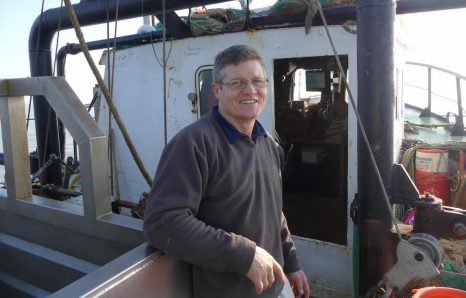
What the hell ha’ you done?
Jeffery Melton fishes from Lowestoft on the English east coast and is only too aware of fishing living up to its reputation as the most dangerous profession – and he forms part of the statistics. Fishing singlehanded aboard his 14m beamer Serene Dawn LT-7 in the Wash in May 2015, a freak set of circumstances combined to render this well-known, hugely experienced and much admired East Anglian fisherman suddenly and violently disabled in an horrific, split-second trauma, while towing for shrimps some miles off the North Norfolk coast. Eighteen months and eleven operations later, he’s back fishing and I joined him last week aboard the Serene Dawn to hear his story, observe the onboard routines and importantly for me, fish for one of tastiest seafood gems in the sea, brown shrimps (Crangon crangon). click here to read the story 09:50
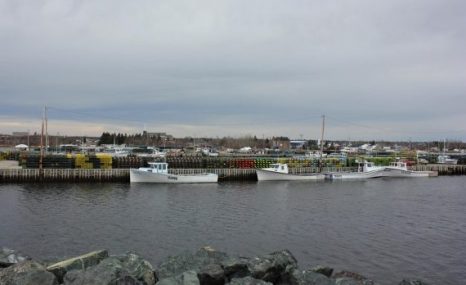
Poor weather, ice conditions delays opening of spring lobster fishery until Monday for northern N.B.
Sunday’s weather forecast has delayed opening day of the spring lobster fishery in northern New Brunswick until Monday at 6 a.m. Fisheries and Oceans Canada’s Luc Légère said the decision came Friday after consultation with industry representatives and the Canadian Coast Guard. “We looked mostly at the weather, but also ice conditions and things like that,” he said. Légère said the forecast is calling for high winds Sunday morning and big waves. Légère said some areas near Miscou Island, Shippagan, and some areas into Miramichi Bay were still having issues with ice conditions, but he hoped the warmer temperatures and winds would blow most of the ice out by Monday. click here to read the story 08:55
Series of coral protection hearings planned for New England
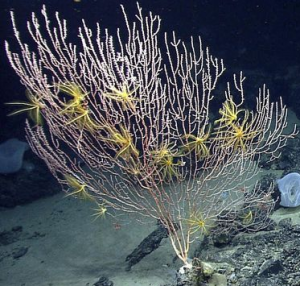 Federal fishery managers will hold a host of public hearings in New England and New York about a plan to protect corals in key East Coast fishing areas. The New England Fishery Management Council is hosting seven public hearings about alternatives it is considering about the protection of corals in the Gulf of Maine and Georges Bank. The hearings will take place from May 22 to 25 in Montauk, Narragansett, New Bedford, Gloucester, Portsmouth, and Ellsworth. There will also be a web-based hearing on May 26. The fishery council says it wants to collect feedback from fishermen and other stakeholders about the coral protection Link 21:28
Federal fishery managers will hold a host of public hearings in New England and New York about a plan to protect corals in key East Coast fishing areas. The New England Fishery Management Council is hosting seven public hearings about alternatives it is considering about the protection of corals in the Gulf of Maine and Georges Bank. The hearings will take place from May 22 to 25 in Montauk, Narragansett, New Bedford, Gloucester, Portsmouth, and Ellsworth. There will also be a web-based hearing on May 26. The fishery council says it wants to collect feedback from fishermen and other stakeholders about the coral protection Link 21:28
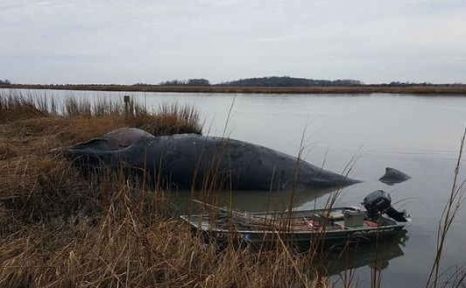
41 humpback whale deaths in Atlantic force fed probe
An unusually high number of dead humpback whales washing ashore along the Atlantic coast has prompted marine mammal experts to open a federal investigation of the cause. But the cause may never be fully determined, according to experts. Since January 2016, 41 of the mammals have washed ashore from North Carolina to Maine. The only cause of death determined so far are cases in which the whales showed signs of being hit by a vessel. But ship strikes only account for a quarter of the deaths. The high number of deaths forced the country’s top marine agency, the National Oceanic and Atmospheric Administration, to declare an “Unusual Mortality Event,” prompting the federal probe. click here to read the story 19:57

Port’s Tuna Harbor Proposal Disappoints San Diego Fishermen
Commercial fishermen who expected that a proposed redevelopment of the San Diego waterfront would include land set aside solely for their industry found out Thursday that the Port of San Diego may have other ideas. The flare-up over the future of the waterfront came as the port proposed new zoning designations as part of its Port Master Plan Update process. Along Tuna Harbor, the land that San Diego’s commercial fishermen hoped would stay classified as “commercial fishing” is being proposed as “mixed use,” allowing for flexibility in development instead of being dedicated to the infrastructure and expansion of the commercial fishing industry. Peter Halmay, along with several other fishermen, expressed frustration to port commissioners during a daylong public workshop. click here to read the story 12:27
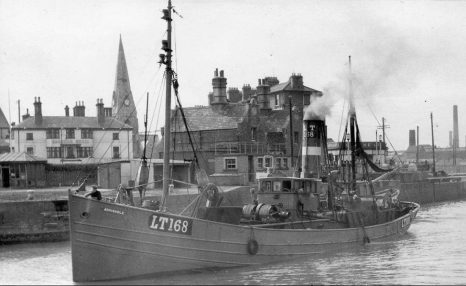
When Lowestoft boats went to fish from Canada
There was an interesting time, way back in the early 1950s, when several drifter/trawlers and trawlers from Lowestoft were sent on the long trip to Nova Scotia to ply their trade, reports Mick Harrod. The first Lowestoft boats to make this voyage were Acorn LT 31, skippered by Ivan Down, and Boston Swift LT 377, in September of 1954. Acorn was a steamer, built in 1919 at Aberdeen and the story goes that, although she was filled with coal, including in the fish hold and ice lockers, she still ran out of fuel in the last few miles and was towed in by Boston Swift. The agreement with Mercury Fisheries Ltd, of Halifax, Nova Scotia, was that the crew initially signed on for six months and then, if they liked it enough, they could have permanent berths and their families would get assistance to move to Canada. click here to view more images, read the story 09:36
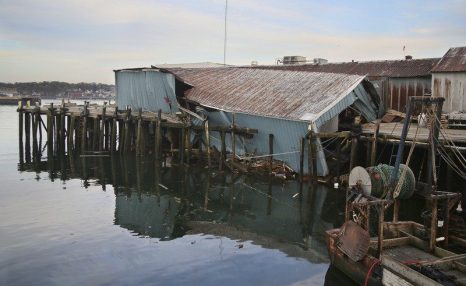
Building, wharf collapse on Gloucester waterfront
Cape Ann Ice owner Scott Memhard was one relieved man last night as he stood surrounded by fire trucks off Commercial Street and surveyed the wreckage of a wharf — originally reported as his — that had collapsed into the Inner Harbor some 20 minutes earlier. “It sounded over the scanner like it was ours,” Memhard said, although Cape Ann Ice’s wharf, located two buildings over, is in sound shape. More reports came in that the collapse was at the old FBI Wharf, which became the North Atlantic Fish wharf, before North Atlantic was bought out by Channel Fish Processing in 2012. There was also confusion about the actual address; fire Capt. Tom Logrande said the storage building was likely 80 Commercial St. but Channel lists its address as No. 88. click here to read the story 08:43

New Bedford among crowd staking claim to Carlos Rafael’s permits
Before Carlos Rafael uttered the word “guilty” last month, the judge made the New Bedford fishing mogul aware of the possibility of forfeiting his assets, which means permits, too. About two months remain before Rafael’s sentencing date, but cities and states have started to acknowledge that possibility as well. “The goal for me is to get ahead of the ball to make partnerships with people that have the same interests, which is keeping the licenses local,” Ward 4 Councilor Dana Rebeiro said. John Pappalardo and Maggie Raymond, the executive director of Associated Fisheries of Maine, expect the status of Rafael’s permits to be decided on the sentencing date. Still, Raymond is already lobbying for any forfeited permit to go to Maine. click here to read the story 08:16
N.C. State Senate votes to delay changes to shrimping rules
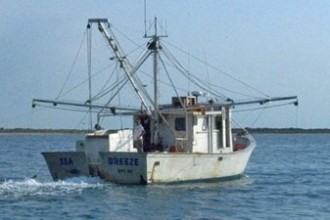 The N.C. Senate voted Thursday to put up a hurdle to proposed rule-making by the state Marine Fisheries Commission spurred by a petition that calls for more limits on shrimping in coastal waters. SB 342 dictates that a collaborative shrimp gear study commissioned in February 2015 must be completed and reported by the stakeholder group created under a partnership of the N.C. Division of Marine Fisheries and North Carolina Sea Grant. The North Carolina Wildlife Federation asked the state to designate waters in the sounds and 3 miles into the ocean as primary nursery areas for various species starting Jan. 1, 2018. The request includes cutting the number of days shrimping is allowed, the amount of time nets can be in the water and the size of equipment that shrimpers can use. It would also set minimum size limits for croaker of 10 inches and spot of 8 inches. “Both of these actions would have a very detrimental impact on our shrimp fishermen,” a statement from the office of state Sen. Bill Cook, R-Beaufort, said. click here to read the story 16:35
The N.C. Senate voted Thursday to put up a hurdle to proposed rule-making by the state Marine Fisheries Commission spurred by a petition that calls for more limits on shrimping in coastal waters. SB 342 dictates that a collaborative shrimp gear study commissioned in February 2015 must be completed and reported by the stakeholder group created under a partnership of the N.C. Division of Marine Fisheries and North Carolina Sea Grant. The North Carolina Wildlife Federation asked the state to designate waters in the sounds and 3 miles into the ocean as primary nursery areas for various species starting Jan. 1, 2018. The request includes cutting the number of days shrimping is allowed, the amount of time nets can be in the water and the size of equipment that shrimpers can use. It would also set minimum size limits for croaker of 10 inches and spot of 8 inches. “Both of these actions would have a very detrimental impact on our shrimp fishermen,” a statement from the office of state Sen. Bill Cook, R-Beaufort, said. click here to read the story 16:35
Business Opposition Grows Stronger to Offshore Oil Exploration and Drilling
 Today we are delivering our clear message to Interior Secretary Zinke—no offshore oil exploration and drilling in the Atlantic Ocean. With the addition of the Miami Beach Chamber of Commerce this week, BAPAC represents over 41,000 businesses and over 500,000 commercial fishing families opposing offshore exploration and drilling for oil in the Atlantic. We are building a green wall—business by business—to protect our vibrant tourism, recreation and commercial fishing economy that would be seriously threatened by the marine-life devastation of seimic airgun blasting and the inevitable destructive leaks, spills and industrialization that comes with drilling. We are not the Gulf Coast nor are we envious of the industrialization of the Gulf Coast. Their economy is oil. Ours is tourism, recreation and commercial fishing. The two economies are incompatible. click here to read the story 14:51
Today we are delivering our clear message to Interior Secretary Zinke—no offshore oil exploration and drilling in the Atlantic Ocean. With the addition of the Miami Beach Chamber of Commerce this week, BAPAC represents over 41,000 businesses and over 500,000 commercial fishing families opposing offshore exploration and drilling for oil in the Atlantic. We are building a green wall—business by business—to protect our vibrant tourism, recreation and commercial fishing economy that would be seriously threatened by the marine-life devastation of seimic airgun blasting and the inevitable destructive leaks, spills and industrialization that comes with drilling. We are not the Gulf Coast nor are we envious of the industrialization of the Gulf Coast. Their economy is oil. Ours is tourism, recreation and commercial fishing. The two economies are incompatible. click here to read the story 14:51
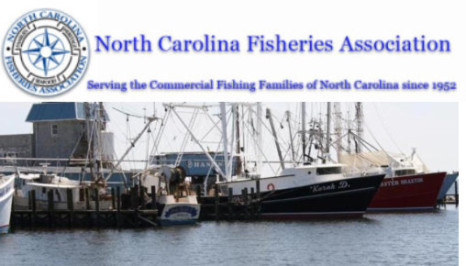
North Carolina Fisheries Association Weekly Update for April 28, 2017
Click here to read the Weekly Update, to read all the updates, Click here 12:20
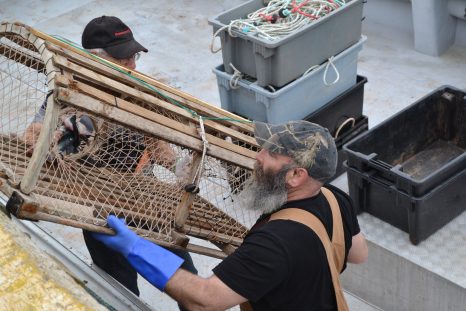
Most of P.E.I.’s 960-boat spring lobster fleet will set gear Saturday – Fishermen from Point Prim to Victoria will set a week later
Some lobster fishermen started transferring traps from the wharf to their boats on Thursday as preparations for Saturday’s opening of the spring lobster fishing season shifted into high gear. Many of the crews, however, are waiting until Friday to load up. “I hope everybody has a safe season, all across P.E.I and I hope the catches are good,” said Francis Morrissey, president of the Western Gulf Fishermen’s Association. Morrissey said many of the fishermen in his area have been able to catch a fair amount of spring herring for bait to get their season started, and he’s encouraged that the weather conditions for setting day, this Saturday are forecast to be good. click here to read the story, and we wish these fishermen well. Stay Safe! 11:55
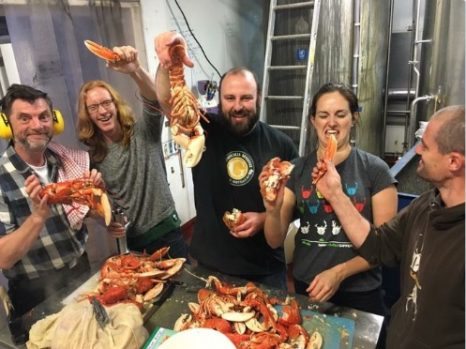
It’s Friday! Try the “Of the Sea” brew! Brewing Company Used 30 Lobsters to Make This Beer
Founded by Andrew Cooper and Brett Ellis, The Wild Beer Co. has come out with several eclectic flavors, including sake, toffee apples, and mushrooms. However, their shellfish beer is one of their most interesting yet, partially because of the process that goes into the brewing. According to the official website, the flavor was inspired by the team’s love for lobster bisque and shellfish, and so they held a “bisque-off” to develop the best beer idea. Cooper, Ellis, and the rest of the team boiled 30 (yes, 30) lobsters into a big pot to boil for 12 minutes before stripping their meat away. They got to munch on the fresh lobster while the shells were grilled and boiled once again. Click here to read the story 11:27
14-year-old boats massive bluefin tuna out of Grand Isle
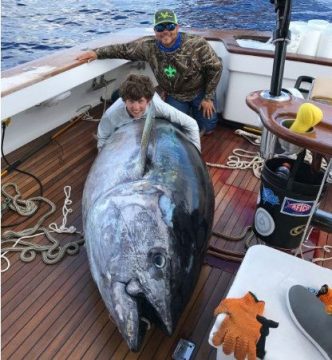 On the hit television show Wicked Tuna, grown men take turns battling bluefin tuna, many times for hours each, and the fish frequently pop lines or pull hooks. The Northeast U.S. anglers should just hire 14-year-old Kaleb Richardson. The Lafayette youngster was fishing with his father, Keith, and friends aboard Keith Richardson’s 58-foot Jarrett Bay Saturday when Kaleb landed an 835-pound bluefin in 55 minutes, louisianasportsman.com reported. The crew was fishing out of Grand Isle on a multi-day trip to the Green Canyon. The crew was fishing out of Grand Isle on a multi-day trip to the Green Canyon. The excursion started successfully, with the anglers leadering, tagging and releasing a 500-pound blue marlin on Thursday. Things slowed down after that, so the crew headed to the Neptune platform Saturday. click here to read the story 09:53
On the hit television show Wicked Tuna, grown men take turns battling bluefin tuna, many times for hours each, and the fish frequently pop lines or pull hooks. The Northeast U.S. anglers should just hire 14-year-old Kaleb Richardson. The Lafayette youngster was fishing with his father, Keith, and friends aboard Keith Richardson’s 58-foot Jarrett Bay Saturday when Kaleb landed an 835-pound bluefin in 55 minutes, louisianasportsman.com reported. The crew was fishing out of Grand Isle on a multi-day trip to the Green Canyon. The crew was fishing out of Grand Isle on a multi-day trip to the Green Canyon. The excursion started successfully, with the anglers leadering, tagging and releasing a 500-pound blue marlin on Thursday. Things slowed down after that, so the crew headed to the Neptune platform Saturday. click here to read the story 09:53
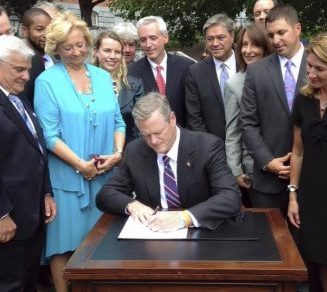
Not exactly a breeze: Offshore wind still faces challenges
Amid all of the challenges that could face offshore wind power along the East Coast — legal disputes from commercial fishing advocates, construction plans altered by whale migrations, President Donald Trump’s emphasis on revitalizing fossil fuels and more — some promising news for renewable industry supporters arrived in mid-March. That’s when a telling indication of how offshore wind power might fare under President Trump was delivered, after an uncertain, wait-and-see winter. Following months of silence about offshore wind, a statement by Secretary of the Interior Ryan Zinke gave an early glimpse of the administration’s tone. click here to read the story 09:22
The Plight of ‘Fish Delight’
 It’s the kind of headline meant to grab the attention of the president: “Say Goodbye to the Filet-O-Fish.” The New York Times op-ed by Bren Smith, Sean Barrett, and Paul Greenberg warned that the proposed cuts to the National Oceanic and Atmospheric Administration had implications for the pollock, the fish used in McDonald’s Filet-O-Fish, which Trump has lovingly called the “fish delight.”,,, Smith, Barrett, and Greenberg contend that the Trump administration’s proposed 17 percent cut in funding for NOAA and its subsidiary, the National Marine Fisheries Service, will have an adverse impact not only on the president’s sandwich, but also the fishing industry. ” ,,, The Seafood Harvesters of America, which represents the interests of commercial fishing (lol!),,, click here to read the story 08:37
It’s the kind of headline meant to grab the attention of the president: “Say Goodbye to the Filet-O-Fish.” The New York Times op-ed by Bren Smith, Sean Barrett, and Paul Greenberg warned that the proposed cuts to the National Oceanic and Atmospheric Administration had implications for the pollock, the fish used in McDonald’s Filet-O-Fish, which Trump has lovingly called the “fish delight.”,,, Smith, Barrett, and Greenberg contend that the Trump administration’s proposed 17 percent cut in funding for NOAA and its subsidiary, the National Marine Fisheries Service, will have an adverse impact not only on the president’s sandwich, but also the fishing industry. ” ,,, The Seafood Harvesters of America, which represents the interests of commercial fishing (lol!),,, click here to read the story 08:37
Trump Orders Review Of National Monuments, Including The First In The Atlantic Ocean
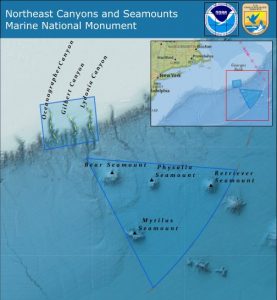 President Donald Trump this week ordered a review of the U.S. Antiquities Act. The move could impact the Atlantic Ocean’s first-ever marine national monument, created last fall. The monument covers nearly 5,000 square miles off the coast of Cape Cod. It’s home to a variety of wildlife and underwater landscapes. This week, Trump ordered his interior secretary to review dozens of monuments created over the last roughly two decades, which are larger than 100,000 acres. Trump said they represent a “massive federal land grab.” Lisa Dale, with the Yale Center for Environmental Law and Policy, said the review isn’t trying to rescind or undo anything — yet. “It’s quite heavy on ideology, and rather light on realism,” she said. lol! we’ll see! click here to read the story 17:19
President Donald Trump this week ordered a review of the U.S. Antiquities Act. The move could impact the Atlantic Ocean’s first-ever marine national monument, created last fall. The monument covers nearly 5,000 square miles off the coast of Cape Cod. It’s home to a variety of wildlife and underwater landscapes. This week, Trump ordered his interior secretary to review dozens of monuments created over the last roughly two decades, which are larger than 100,000 acres. Trump said they represent a “massive federal land grab.” Lisa Dale, with the Yale Center for Environmental Law and Policy, said the review isn’t trying to rescind or undo anything — yet. “It’s quite heavy on ideology, and rather light on realism,” she said. lol! we’ll see! click here to read the story 17:19
Illicit Business – Are Louisiana’s anglers selling their recreationally caught speckled trout?
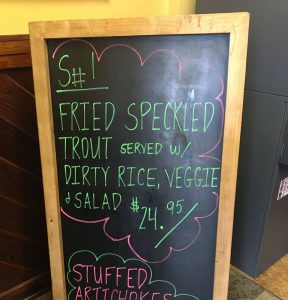 When fish are getting yanked into the boat almost as quickly as an angler can get a lure in the water, the fun sometimes overcomes discretion, and that same angler will wonder what he’s going to do with all that meat after he fillets the fish. Some eat what they can and give the rest away, while others load up their freezers with fillets packed in Ziploc bags that they’ll throw out in two years. But another smaller minority will sell their catch to restaurants, seafood markets or acquaintances. It’s common dock talk among anglers that some of their cohorts have even put their kids through college with money raised from selling recreationally caught fish, particularly speckled trout. click here to read the story 15:24
When fish are getting yanked into the boat almost as quickly as an angler can get a lure in the water, the fun sometimes overcomes discretion, and that same angler will wonder what he’s going to do with all that meat after he fillets the fish. Some eat what they can and give the rest away, while others load up their freezers with fillets packed in Ziploc bags that they’ll throw out in two years. But another smaller minority will sell their catch to restaurants, seafood markets or acquaintances. It’s common dock talk among anglers that some of their cohorts have even put their kids through college with money raised from selling recreationally caught fish, particularly speckled trout. click here to read the story 15:24
Deepwater Wind Confronted – Fishermen ask trustees to fight offshore wind farm
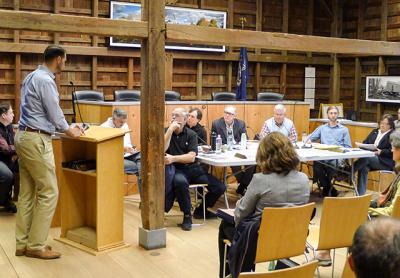 A representative of the Rhode Island company that is planning a 15-turbine wind farm 30 miles off Montauk faced sharp questions from fishermen and other residents at the East Hampton Town Trustees meeting on Monday, as well as from the trustees themselves. A lengthy presentation and a subsequent question-and-answer session occupied more than half of the nearly four-hour meeting, as fishermen voiced fears of disruption and even the outright destruction of their livelihood. “Most of fishermen I know, we are against this project from the beginning to the end,” Terry Wallace said to applause. Brad Loewen, chairman of the East Hampton Town Fisheries Advisory Committee, criticized Deepwater’s effort to hire fisheries representatives here. “You can try to buy advice, you can try to buy trawl surveys, you can try to buy scientific data,” he said. “I would suggest . . . that you don’t necessarily listen to somebody that was hired by them,” he told the trustees. “Listen to the people doing the job, somebody actually out trawling, running around that bay, trying to catch fish, and trying to make a living.” click here to read the story 14:18
A representative of the Rhode Island company that is planning a 15-turbine wind farm 30 miles off Montauk faced sharp questions from fishermen and other residents at the East Hampton Town Trustees meeting on Monday, as well as from the trustees themselves. A lengthy presentation and a subsequent question-and-answer session occupied more than half of the nearly four-hour meeting, as fishermen voiced fears of disruption and even the outright destruction of their livelihood. “Most of fishermen I know, we are against this project from the beginning to the end,” Terry Wallace said to applause. Brad Loewen, chairman of the East Hampton Town Fisheries Advisory Committee, criticized Deepwater’s effort to hire fisheries representatives here. “You can try to buy advice, you can try to buy trawl surveys, you can try to buy scientific data,” he said. “I would suggest . . . that you don’t necessarily listen to somebody that was hired by them,” he told the trustees. “Listen to the people doing the job, somebody actually out trawling, running around that bay, trying to catch fish, and trying to make a living.” click here to read the story 14:18
FISH-NL calls for resignation of leader of province’s Federation of Labour, and they’re not alone!
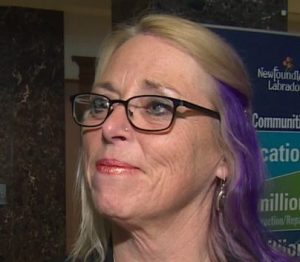 The Federation of Independent Sea Harvesters of Newfoundland and Labrador (FISH-NL) is demanding the resignation of Mary Shortall, president of the province’s Federation of Labour, for taking sides in the dispute between FISH-NL and the FFAW, as well as blatant conflict of interest. “Mary Shortall has no business choosing sides — standing by the executive of the FFAW over rank-and-file fish harvesters who are slowly being starved out by a combination of failed management and a union that has lost its way,” says Ryan Cleary, President of FISH-NL. “Mary Shortall has also lost touch with workers in this province and should be forced to resign immediately, and it’s not just me who’s saying that — but at least one local union president.” click here to read the press release (image cbc) 11:34
The Federation of Independent Sea Harvesters of Newfoundland and Labrador (FISH-NL) is demanding the resignation of Mary Shortall, president of the province’s Federation of Labour, for taking sides in the dispute between FISH-NL and the FFAW, as well as blatant conflict of interest. “Mary Shortall has no business choosing sides — standing by the executive of the FFAW over rank-and-file fish harvesters who are slowly being starved out by a combination of failed management and a union that has lost its way,” says Ryan Cleary, President of FISH-NL. “Mary Shortall has also lost touch with workers in this province and should be forced to resign immediately, and it’s not just me who’s saying that — but at least one local union president.” click here to read the press release (image cbc) 11:34
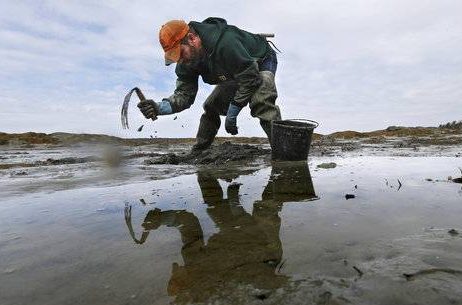
Mysterious drop in prized bait worms threatens a way of life
Dan Harrington makes his living unearthing marine worms by hacking away at mudflats with a tool that resembles the business end of an old steel rake. He’s fine with the freezing weather, the pungent aromas and the occasional nip from an angry crab, but his latest problem is the big one – the worms just aren’t there like they used to be.,,, Scientists are struggling to figure out where the worms have gone. Among the factors that could play a role in the decline are rising temperatures in the Gulf of Maine, changes in currents that distribute worm larvae and increased harvesting pressure, said William Ambrose, a Bates College professor and marine researcher. It’s also possible a growing number of invasive green crabs is preying on the worms, said Brian Beal, a marine ecology professor at the University of Maine at Machias. click> (invasive green crab discovered in Dungeness National Wildlife Refuge) But Beal and Ambrose say more research is needed to understand what’s going on. click here to read the story 10:26
Invasive European green crab found in Dungeness Bay
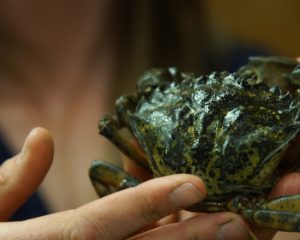 An invasive crab species scientists and locals feared to find on the North Olympic Peninsula was discovered in traps last week in Dungeness Bay. Staff and volunteers at the Dungeness National Wildlife Refuge found at least 13 European green crabs in Graveyard Spit across from Dungeness Landing and continue to investigate just how prevalent the species might be there. Emily Grason, program coordinator for Washington Sea Grant’s Crab Team, said these are the first of the crab to be found in inland Washington since the crab was captured in August 2016 in Westcott Bay off San Juan Island in Puget Sound. Sea Grant officials say the European green crab, a small shore crab measuring up to 4 inches across, is native to the Atlantic Ocean and Baltic Sea and is known for damaging the soft-shell clam industry in Maine. click> It will eat clams, oysters, mussels and marine worms, and is potentially harmful to birds and small crustaceans. click here to read the story 10:12
An invasive crab species scientists and locals feared to find on the North Olympic Peninsula was discovered in traps last week in Dungeness Bay. Staff and volunteers at the Dungeness National Wildlife Refuge found at least 13 European green crabs in Graveyard Spit across from Dungeness Landing and continue to investigate just how prevalent the species might be there. Emily Grason, program coordinator for Washington Sea Grant’s Crab Team, said these are the first of the crab to be found in inland Washington since the crab was captured in August 2016 in Westcott Bay off San Juan Island in Puget Sound. Sea Grant officials say the European green crab, a small shore crab measuring up to 4 inches across, is native to the Atlantic Ocean and Baltic Sea and is known for damaging the soft-shell clam industry in Maine. click> It will eat clams, oysters, mussels and marine worms, and is potentially harmful to birds and small crustaceans. click here to read the story 10:12
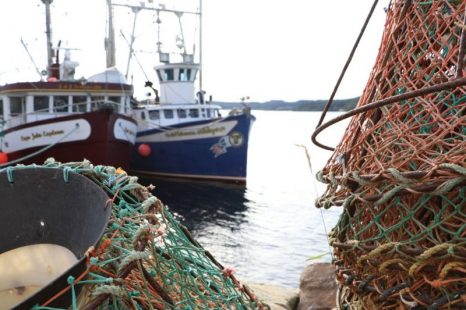
Newfoundland and Labrador Fishermen don’t agree that crab, shrimp stocks are as bad as scientists say
The province’s fishery appears to be on the brink of a sea change. News over the past couple of months of continually declining snow crab and northern shrimp stocks in waters off Newfoundland and Labrador’s coasts have sent waves of concern washing over the fishing industry. The expected cuts this spring to crab and shrimp quotas have fisherman all around the province on edge. And there’s little else to fill in the gap — the northern cod stocks, while showing signs of strong growth in recent years, are still not ready for a major commercial fishing effort. Lying in the balance are huge investments in vessels and fishing gear, work for boat crews and plants, and the survival of rural areas of the province. But while scientific stock assessments of crab and shrimp reveal a dismal picture, many fishermen are not so sure that picture is accurate. In fact, many say they are seeing things a bit differently out on the water, and see some hope for the fishery of the future if fishermen are willing to branch out into other potential commercial species. click here to read the story 08:50
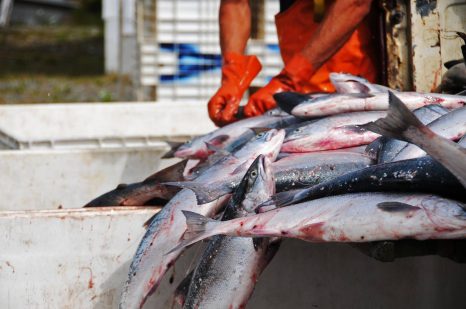
2017 sockeye forecast weak for Cook Inlet
Upper Cook Inlet’s commercial salmon fishermen are predicted to have another slow season, if the forecast proves accurate. The Alaska Department of Fish and Game’s 2017 commercial salmon fishery outlook predicts a total run of about 4 million fish to all the stream systems in Upper Cook Inlet, which includes the Kenai, Kasilof and Susitna rivers as well as a number of smaller streams. Commercial fishermen are projected to harvest about 1.7 million of that, the lowest projected harvest in the last 15 years. It’s largely the Kenai River not living up to the recent 10-year average. The river is projected to see a return of 2.2 million sockeye, about 39 percent below the recent 10-year average of 3.6 million fish. By contrast, the Susitna River is projected to see about 366,000 sockeye return, about 5 percent below the average; the Kasilof River is expected to see about 825,000 sockeye, about 16 percent below the recent average, according to the forecast. Better than 2016 – Improving prices – Board of Fisheries changes – click here to read the story 08:29
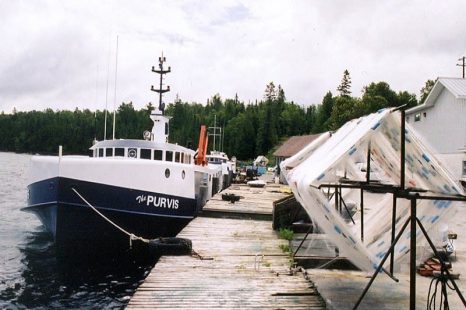
Training Great Lakes captains – Online education makes Marine Institute a hub for Canadian harvesters
When you think about Ontario, commercial fisheries aren’t something that necessarily comes to mind. But there is a thriving industry on the Great Lakes. In fact, according to the Ontario Commercial Fisheries’ Association (OCFA), “Ontario is home to the largest freshwater fishery in North America.”,,, But much as with Newfoundland and Labrador fisheries, the province of Ontario’s skilled fishers are aging. “The captains are becoming older and starting to retire,” said Jane Graham, executive director of the OCFA. “We wanted to have people trained to step into the role.”,,, The online version of Fishing Master Class IV program started as a pilot project back in 2010 to meet the same needs as those of the OCFA. The initiative was developed by the Marine Institute, in partnership with the Canadian Council of Professional Sea Harvesters and the Department of Fisheries and Aquaculture, as a way of improving training in the industry and filling the gap in (s)killed harvesters. click here to read the story 18:04
Mexico plans immediate action on US imports after WTO tuna ruling over USA “dolphin-safe” labeling
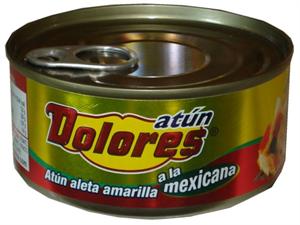 However, the ruling could be overturned later this year if a subsequent WTO decision finds the United States has stopped discriminating against tuna caught by its southern neighbor. The World Trade Organization ruled Tuesday that Mexico’s tuna industry has been harmed by USA “dolphin-safe” labeling rules and says the country can seek retaliatory measures worth hundreds of millions of dollars. Mexico’s economy ministry said it planned immediate action to initiate the trade sanctions. Ruling on the tuna dispute, a WTO arbitrator said earlier on Tuesday that Mexico can impose annual trade sanctions worth $163.23 million against the United States. The US insists that any Mexican tuna sold in the US must be “dolphin safe”, meaning dolphins weren’t killed by tuna fisherman, which was once common. The WTO agreed and ruled that Mexico could place trade sanctions on the USA of up to $163 million a year, enough to make up Mexico’s estimated loss. “Today’s WTO decision threatens to punish USA families for the crime of having a label on tuna cans that saves dolphins’ lives”. click here to read the story 16:23
However, the ruling could be overturned later this year if a subsequent WTO decision finds the United States has stopped discriminating against tuna caught by its southern neighbor. The World Trade Organization ruled Tuesday that Mexico’s tuna industry has been harmed by USA “dolphin-safe” labeling rules and says the country can seek retaliatory measures worth hundreds of millions of dollars. Mexico’s economy ministry said it planned immediate action to initiate the trade sanctions. Ruling on the tuna dispute, a WTO arbitrator said earlier on Tuesday that Mexico can impose annual trade sanctions worth $163.23 million against the United States. The US insists that any Mexican tuna sold in the US must be “dolphin safe”, meaning dolphins weren’t killed by tuna fisherman, which was once common. The WTO agreed and ruled that Mexico could place trade sanctions on the USA of up to $163 million a year, enough to make up Mexico’s estimated loss. “Today’s WTO decision threatens to punish USA families for the crime of having a label on tuna cans that saves dolphins’ lives”. click here to read the story 16:23






